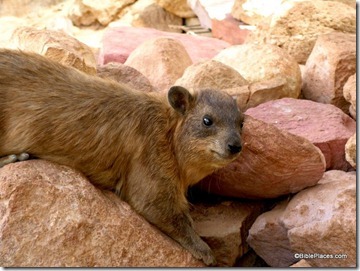What some people view as cute critters are becoming a troublesome pest to others. Hyraxes, also known as rock badgers or coneys, are mentioned in Leviticus 11:5, Deuteronomy 14:7, Psalm 104:18, and Proverbs 30:26. A BBC report describes how these relatives of the elephant and aardvark are leaving the crags and entering villages.
“A lot of people in the west haven’t heard of the hyrax, but it’s very common in the Middle East,” lead researcher Arik Kershenbaum told BBC Nature.
“It’s even mentioned in the Bible as one of the main inhabitants of the land.”
But, as Mr Kershenbaum explained, around Galilee the animals are no longer behaving in a “biblical way” – making their homes in the rocky hills and cliffs of the countryside.
“They’re coming into the villages and eating everything they can find,” said Mr Kershenbaum.
[…]
“It turns out that it’s the piles of boulders [created by clearing sites for building] that attract the hyraxes,” said Mr Kershenbaum.
They make their homes in the underground caverns and crevices created by these man-made rubble piles.
[…]
But early research indicates that simply filling in the boulder piles would drive hyraxes out of the villages and back to the cliffs, just as it says in the Bible.
For more information about the hyrax, see the Anchor Bible Dictionary 6:1143.

